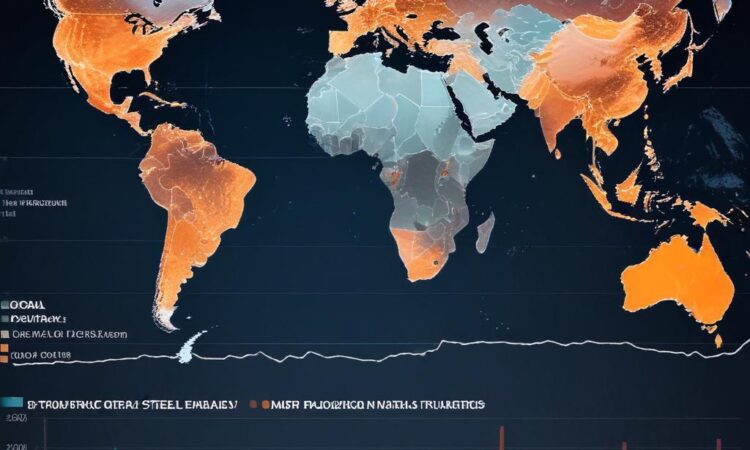With Trump’s Tariffs Looming – Will Countries Scramble to Cut Deals?
US steel suppliers have just over a month to decide how to respond before the new tariffs take effect. The impending implementation of President Trump’s tariffs on imported steel has sent ripples of uncertainty throughout the global steel industry. The clock is ticking, and businesses are grappling with the potential ramifications of these significant trade changes. This situation presents a complex web of challenges and opportunities, forcing companies to reassess their strategies and potentially leading to a flurry of last-minute negotiations and strategic alliances.
The tariffs, aimed at protecting domestic steel producers, are expected to significantly increase the cost of imported steel. This will undoubtedly impact businesses that rely on imported materials, potentially leading to higher prices for consumers and a shift in supply chains. However, the tariffs also present an opportunity for US steel manufacturers, potentially boosting domestic production and creating jobs. The reality, however, is far more nuanced.
Several key questions remain unanswered. Will foreign steel producers absorb the increased costs, or will they pass them on to their customers? How will this impact the competitiveness of US manufacturers who rely on imported steel? Will the tariffs succeed in their stated goal of protecting domestic jobs, or will they lead to job losses in other sectors of the economy reliant on affordable steel? These are just some of the crucial questions that are currently being debated by economists, policymakers, and industry experts.
The response from foreign governments is likely to be varied and complex. Some countries may choose to engage in retaliatory tariffs, escalating the trade war and potentially harming their own economies. Others may attempt to negotiate bilateral trade agreements to mitigate the impact of the US tariffs. The possibility of a global trade war looms large, with potentially significant consequences for global economic stability. This uncertainty is already prompting many countries to engage in diplomatic efforts, seeking to find solutions that minimize the negative impact of the tariffs.
The next few weeks will be crucial for US steel suppliers. They face a critical decision: adapt to the new reality of higher tariffs, potentially by investing in domestic sourcing, exploring alternative materials, or seeking out new trade partners. Alternatively, they might attempt to lobby for exemptions or changes to the tariff regime. The pressure is immense, and the decisions made in the coming weeks could have long-lasting consequences for their businesses and the wider economy.
The potential for strategic alliances and mergers within the steel industry is also significant. Companies may seek to consolidate their operations to gain greater economies of scale and enhance their ability to withstand the impact of the tariffs. This could lead to a reshaping of the global steel market, with larger, more integrated companies emerging as dominant players. The current climate fosters an environment ripe for strategic maneuvering and decisive action.
Beyond the immediate impact on the steel industry, the tariffs have wider implications for the global economy. The increased cost of steel could impact various sectors, including construction, automotive, and manufacturing. These ripple effects could lead to higher prices for consumers, reduced economic growth, and increased inflationary pressure. The intricate connections between various sectors of the global economy highlight the potentially far-reaching impact of these protectionist measures.
The uncertainty surrounding the tariffs is also likely to affect investment decisions. Businesses may postpone or cancel investments until there is greater clarity about the future trade landscape. This could further dampen economic growth and hinder innovation. The cautious approach by businesses reflects the nervousness surrounding the volatile trade environment and the unpredictable nature of the ongoing situation.
In conclusion, the impending tariffs on imported steel present a significant challenge for the global steel industry and the wider economy. The next few weeks will be a crucial period of decision-making for US steel suppliers, who must carefully assess the risks and opportunities presented by this new trade environment. The response of foreign governments and the broader economic implications of these tariffs remain to be seen, but one thing is certain: the global steel industry is on the brink of significant change.
The situation calls for careful observation, strategic planning, and proactive adaptation. The uncertainty highlights the interconnectedness of global markets and the potential for significant ripple effects from even seemingly isolated trade policies. The potential for both positive and negative consequences underscores the complex nature of international trade and the need for thoughtful and comprehensive policy considerations.
The coming weeks will be pivotal in determining the long-term effects of these tariffs, shaping the future of the global steel industry and revealing the extent to which countries will scramble to secure favorable trade agreements. The outcome remains uncertain, adding to the anticipation and speculation surrounding this critical juncture in global trade relations.

